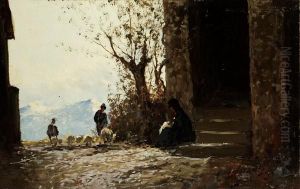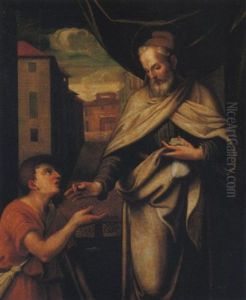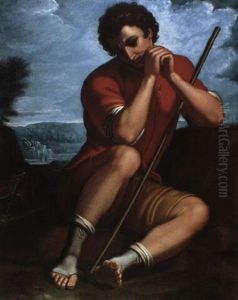Cosimo Gamberucci Paintings
Cosimo Gamberucci was an Italian painter born in 1562 in Florence, Italy, during the Renaissance, a period renowned for its artistic and cultural advancements. His life and work were deeply embedded in the rich artistic landscape of Florence, which during the 16th and early 17th centuries, was a vibrant center for artists, sculptors, and architects. Gamberucci's contributions, although not as widely recognized as those of his contemporaries like Michelangelo or Leonardo da Vinci, still hold significance in the realm of Italian Renaissance art.
Gamberucci's artistic journey is reflective of the broader trends in Italian Renaissance art, characterized by a deep interest in humanism, the exploration of perspective, and a greater realism in depicting human figures and landscapes. He was known to have worked predominantly with religious themes, a common practice among artists of his time, given the Church's patronage of the arts. His works often depicted scenes from the Bible, the lives of saints, and other religious narratives, rendered with a keen attention to detail and a vibrant use of color that brought these sacred stories to life.
Despite the lack of extensive records on his personal life or training, it is believed that Gamberucci was part of the artistic milieu in Florence that included being influenced by or perhaps working alongside more prominent artists of the era. This environment would have provided him with exposure to the innovative techniques and philosophical ideas circulating among the artistic community.
Gamberucci's death in 1621 marked the end of a career that contributed to the tapestry of Renaissance art. While his work may not have achieved the same level of fame as some of his peers, his paintings remain a testament to the enduring appeal and richness of Renaissance artistry. Today, Gamberucci’s works are studied for their contribution to the development of Italian painting, offering insights into the lesser-known aspects of Renaissance art culture and the diverse array of talents that flourished during this golden age of creativity.


